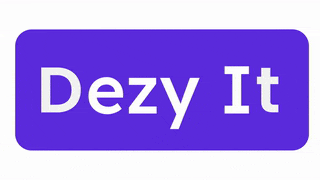Branding with Design Sprint
- Chinmayee
- Oct 19, 2022
- 2 min read

The majority of traditional branding approaches are stuck. Allow me to explain. Creating a brand frequently begins with a business, market, and competitor perspective, with customer segments in mind. A brand strategy is then constructed around these insights. This is oversimplified, but the general approach is usually along these lines.
And it usually feels right because it is from one perspective: the inside-out perspective. And this is fantastic. Excellent for both inspiration and divergence. It is not suitable for validation or convergence.
Inside-out development, in general, means developing from the brand's perspective and using insights generated about the brand, its business, and its competitors. Outside-in development means prototyping and iterating with customers.
Branding with sprint and product development?
Sprints are indeed a format that is quick, inexpensive, and effective. It is a "five-day process for answering critical questions through prototyping and testing ideas with customers" that involves designers, prototypers, and, most importantly, relevant stakeholders.
Five-day sprints can provide answers to many questions.
A sprint begins on Monday with the definition of goals, ranging from short to long-term. The goal and related questions are set from the outside in and can be mapped as a result. This means determining the approximate number of steps required to achieve this goal.
In the following step, we interview people who, depending on the process, are either experts who provide brand insights or customers who provide information about their experience with the brand or its category. Following the sprint process, all participants formulate relevant insights as "How might we" questions, which are then voted on to determine the most pertinent ones.
The following day, we begin with talking in which we look at some best-in-class cases that can inspire our thinking. We are now sketching brand scenarios for branding. Each one is based on a single big idea. This entails following the "What if..." narrative. What if your brand was... The big ideas are the outcomes of the HMWs and preliminary interviews.
The following day, we begin the decision-making process to determine which scenario will be prototyped and tested. Following art museum-ing (pinning everything up like in a museum) and voting, we continue to storyboard the prioritized scenario while putting the others on hold for later.
The prototyping process begins here. We divide and conquer, decide which tools to use and how much fidelity we want to achieve, and then get to work. It is critical to take notes on common concepts and patterns throughout the testing day.
Conclusion
Even after reaching a comfortable level of insight, it is critical to maintain fast and lean work after a sprint. With more sprints. Sprints are an excellent way to get into the right mindset right away. Don't get too caught up in inside-out analysis and phony strategic development for yourself (or your team). Prototype, experiment, and validate.
To know more about design sprints and their services, click below to visit our website and book a call!


Comments